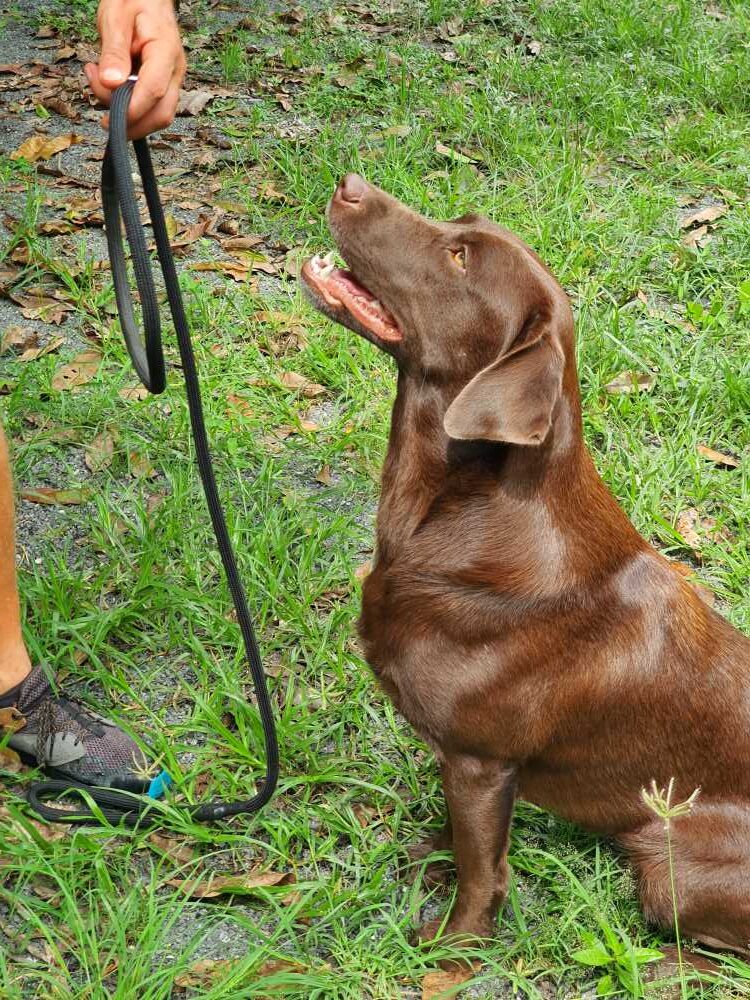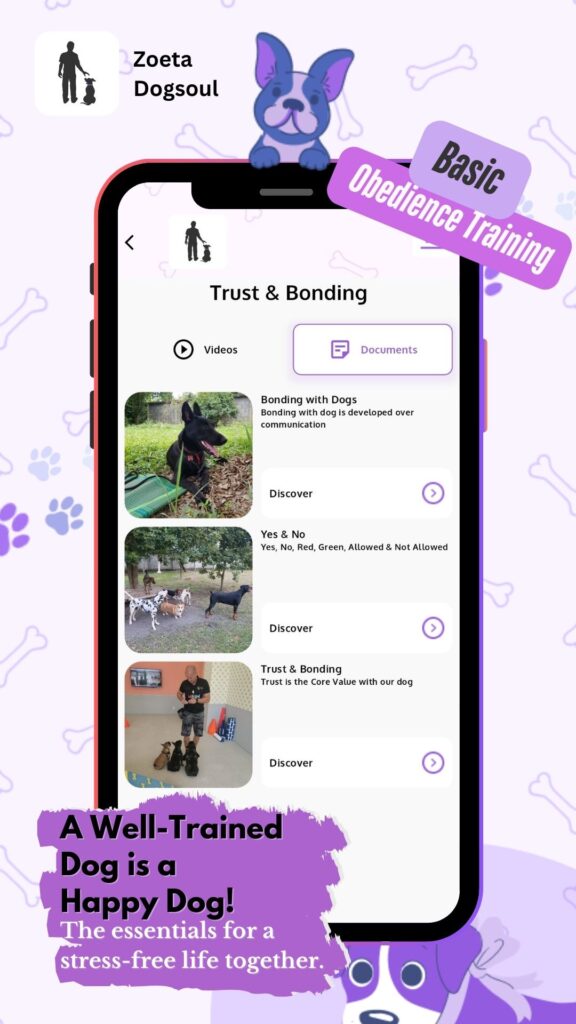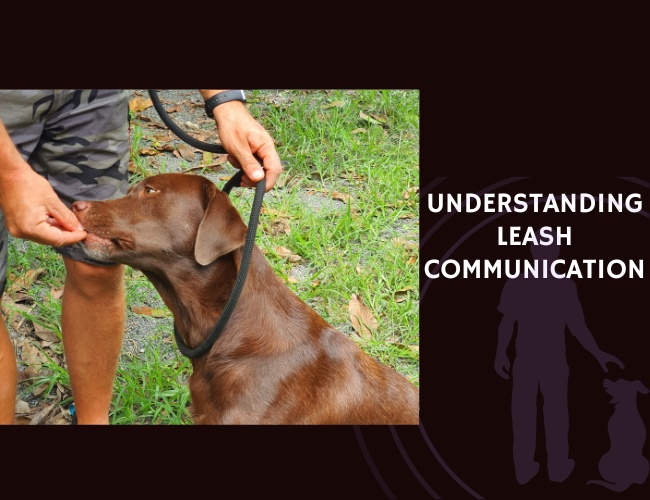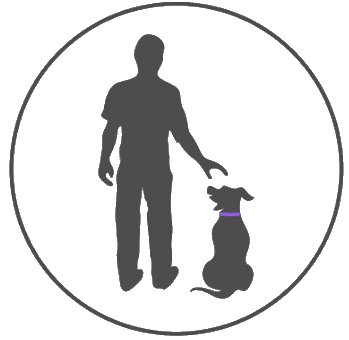Introduction to Free Space Zone Training
Definition and Importance of Free Space Zones in Dog Training
Free space zones in dog training emphasize a dog’s ability to understand and respect spatial boundaries without the continuous use of a leash. These zones encourage dogs to respond to their handler’s non-verbal cues and body language, fostering a form of communication that relies more on mutual understanding and less on physical restraint.
The importance of free space zones is rooted in their ability to build trust and confidence between the dog and the handler. Dogs learn to navigate spaces independently while staying within designated boundaries, enhancing their spatial awareness and decision-making skills. This approach is especially beneficial for real-world scenarios where direct leash control may not always be feasible.
How Free Space Zones Differ from Traditional Leash Training Methods
Traditional leash training methods typically focus on using the leash as the primary tool for controlling and guiding the dog. In contrast, free space zone training shifts this dependency away from the leash. Instead, it relies on the dog’s understanding of spatial commands and the ability to follow the handler’s cues within an open space.
The main differences include:
- Control Mechanism: Traditional leash training uses the leash to enforce commands physically, while free space zone training prioritizes spatial cues and body language.
- Freedom and Independence: Free space zones provide the dog with more freedom to move and make decisions, fostering a greater sense of independence and confidence.
- Communication Style: Leash training often involves physical corrections, whereas free space zone training emphasizes non-verbal communication and subtle cues.
Benefits of Incorporating Spatial Awareness in Training
Integrating spatial awareness into dog training offers several key benefits:
- Enhanced Communication: Dogs trained with a focus on spatial awareness are more attuned to their handler’s body language and non-verbal cues, leading to smoother and more effective communication.
- Improved Behavioral Responses: By understanding and respecting spatial boundaries, dogs tend to exhibit better behavior in various environments, reducing the likelihood of pulling, lunging, or other undesirable actions.
- Greater Confidence and Independence: Dogs gain confidence as they learn to navigate spaces without the constant physical presence of a leash. This independence can result in a more well-rounded and adaptable pet.
- Real-World Applicability: Free space zone training prepares dogs for real-world situations where leash control may not be practical. This training is valuable for off-leash walks, dog parks, and other environments where spatial awareness is crucial.
As we continue to explore the components of free space zone training, understanding the nuances of dog-handler communication will be pivotal. Recognizing non-verbal cues and responses lays the groundwork for creating an effective and trusting partnership between you and your dog.
Understanding Dog-Handler Communication
Effective communication between you and your dog is fundamental to successful Free Space Zone Training. This chapter delves into the critical components of dog-handler communication, focusing on non-verbal cues, body language, sensitivity to the dog’s responses, and establishing clear communication patterns.
The Role of Non-Verbal Cues and Body Language
Non-verbal cues and body language are the primary means of communication with your dog. Dogs are exceptionally adept at interpreting these signals, often better than verbal commands. Here are some ways to effectively use non-verbal communication in training:
- Posture and Positioning: Your body posture can provide significant cues. For example, standing tall can convey authority, while crouching down can signal friendliness or an invitation to play.
- Facial Expressions: Dogs can read human facial expressions. A smile can be reassuring, while a stern look can indicate disapproval.
- Gestures: Hand signals, such as pointing or waving, can direct your dog’s attention or actions. Consistent use of gestures enhances understanding.
Using non-verbal communication effectively requires consistent and clear signals. Any mixed messages can confuse your dog, hindering the training process.
Developing Sensitivity to Your Dog’s Responses
Understanding your dog’s responses to your cues is crucial. Each dog is unique, and their body language can vary. Here are some tips to develop sensitivity to your dog’s reactions:
- Observing Body Language: Watch for signs such as tail wagging, ear positioning, and body stiffness. These can indicate your dog’s emotional state, such as excitement, fear, or attention.
- Eye Contact: Your dog’s eye contact can signal various emotions. Direct eye contact may show focus or challenge, while avoiding eye contact can indicate submission or fear.
- Vocalizations: Pay attention to sounds like barking, whining, or growling to understand their messages. These sounds can convey needs, wants, or emotions.
By keenly observing and interpreting these signals, you can adjust your training methods to better align with your dog’s comfort and readiness.
Importance of Establishing Clear Communication Patterns
Establishing clear communication patterns is vital in creating a reliable training framework. Consistency and clarity help your dog understand and predict your expectations, leading to better behavior and cooperation. Here are some strategies to establish effective communication patterns:
- Consistency in Commands: Use the same words and gestures for specific actions. Changing commands can confuse your dog, delaying progress.
- Positive Reinforcement: Reward desirable behaviors consistently. Praise, treats, and affection can reinforce positive actions, making your dog more eager to repeat them.
- Routine and Structure: Dogs thrive on routine. Establishing a structured training schedule can help your dog understand what to expect and when, reducing anxiety and enhancing focus.
Developing these clear patterns often requires patience and practice, but it greatly benefits both you and your dog by strengthening the bond and improving overall training effectiveness.
While mastering communication, it’s essential to create the right training environment and progress at a pace comfortable for your dog. The next step will be establishing free space zones, which offer a comfortable setting to apply these communication techniques and gradually introduce new challenges.
Establishing Free Space Zones
Creating Free Space Zones is a critical element in advanced dog training, aimed at fostering spatial awareness and confidence in your dog. This chapter provides a detailed approach to establishing these zones by creating comfortable training environments, gradually introducing distractions and challenges, and building confidence through spatial freedom.
Creating Comfortable Training Environments
A successful training environment is one where the dog feels secure and unthreatened. Start training sessions in a familiar and quiet location, such as your backyard or a serene part of a park. The aim is to minimize overwhelming stimuli that can distract or stress your dog.
When setting up your space, consider the following tips:
- Limit distractions: Choose an area free from excessive noises, other animals, or people initially.
- Ensure safety: Check for any potential hazards like sharp objects or toxic plants.
- Keep it enclosed: If possible, utilize a fenced area to prevent your dog from wandering off and to create a sense of boundary.
Creating a comfortable training ground helps establish a foundational sense of security. As your dog becomes more confident, these zones will become familiar places conducive to learning.

Gradually Introducing Distractions and Challenges
Once your dog is comfortable within the initial training environment, gradually introduce distractions to enhance their focus and resilience. Begin with mild distractions and progressively increase the complexity as your dog improves.
Here are some examples:
- Visual and auditory stimuli: Start with simple movements or sounds, like someone walking at a distance or gentle music. Gradually, introduce more dynamic stimuli such as bikes passing by or louder noises.
- Presence of other dogs: Initially, have a calm dog at a distance. As your dog gets used to it, bring the other dog closer or introduce multiple dogs in the training zone.
- New environments: Shift your training to new locations, starting with places similar to the original area, then progressing to busier or unfamiliar spaces.
Each new challenge should be introduced methodically, with plenty of positive reinforcement for your dog’s calm behavior and focus. Consistency and patience are essential during this phase to avoid overwhelming your dog.
Building Confidence Through Spatial Freedom
The ultimate goal of Free Space Zone Training is to build your dog’s confidence and independence by allowing them to move freely within certain boundaries. This spatial freedom mimics real-world scenarios where leashes are not always practical, enhancing your dog’s self-control and trust in your guidance.
To build confidence through spatial freedom:
- Use marker training: Establish specific boundaries or markers within your training space—like cones or flags. Gradually extend these markers to widen the training area.
- Encourage exploration: Allow your dog to explore the space freely, returning to you upon command. This reinforces their recall and strengthens the bond.
- Reward independent behavior: Positive reinforcement in the form of treats, praise, or play when your dog respects boundaries or returns at your signal is crucial.
Confident dogs are less likely to feel anxious or overexcited in new situations. Providing them with the freedom to move and make decisions within set boundaries fosters their ability to handle various stimuli calmly.
Free Space Zone Training is a step-by-step process that builds on creating secure environments, methodically introducing distractions, and encouraging spatial freedom to develop a well-rounded, confident dog. By laying this groundwork, you prepare your dog to face diverse environments and scenarios with poise and self-assurance.
The Art of Loose Leash Walking
Training Without Relying Primarily on the Leash
Training a dog to walk on a loose leash is an essential aspect of free space zone training. Unlike traditional methods that depend heavily on leash control, this approach emphasizes spatial awareness and a dog’s ability to explore with autonomy. The primary goal is to foster a sense of mutual respect and understanding, creating a harmonious walking experience.
To begin, it’s crucial to train the dog without relying on the leash. Start in a controlled environment where the dog feels safe and comfortable. Use positive reinforcement techniques, such as treats or praise, to encourage the dog to stay close. Let the dog explore but call it back periodically, rewarding it for compliance. This teaches the dog that being near you is both rewarding and comforting.
Training sessions should be short and engaging to avoid overwhelming the dog. Gradually increase the duration of these sessions as the dog grows more comfortable with the concept. Consistency is key; therefore, practicing daily will yield the best results.
Transitioning from Free Space to Leashed Walking
Once the dog is accustomed to moving freely and responding to commands in a leash-free environment, it’s time to introduce the leash. The objective here is to maintain the same level of freedom and responsiveness as without the leash. Begin by attaching a lightweight leash that the dog can drag behind, allowing it to feel the presence of the leash without the handler holding it.
After the dog gets used to the leash’s presence, gently pick it up and hold it loosely. Encourage the dog to walk beside you by using the same commands and rewards you used in the leash-free training. The key is to avoid pulling or correcting the dog with the leash. Instead, use verbal cues and body language to guide the dog’s movements.
During this transition, it’s important to pay attention to the dog’s comfort level. If the dog shows signs of stress or non-compliance, revert to the leash-free training and reintroduce the leash slowly. Always maintain a positive and patient attitude to ensure the dog associates the leash with positive experiences.
Maintaining Calm Responses During Walks
Maintaining calm responses during walks is the final step in mastering the art of loose leash walking. Dogs are highly sensitive to their handler’s emotions and body language, so it is crucial to stay calm and composed during walks. If the dog becomes distracted or excited, use gentle verbal cues and body signals to regain its attention.
Practicing regular obedience commands, like “sit” and “stay,” during walks can help maintain the dog’s focus and calmness. When encountering stimulating situations, such as meeting other dogs or people, prepare the dog in advance with positive reinforcement for calm behavior.
Gradually exposing the dog to different walking environments will also help build its emotional regulation. Start with quiet, low-distraction areas and progressively move to busier settings as the dog becomes more confident and responsive. This gradual exposure will help the dog learn to maintain composure and attentiveness in various circumstances.
By following these steps, you will establish a strong foundation for loose leash walking, enhancing the overall training experience and strengthening the bond between you and your dog.
Managing External Stimuli
As we delve deeper into Free Space Zone Training, it’s crucial to address managing external stimuli. These techniques aim to help your dog maintain focus and emotional regulation, especially in distracting environments. Here’s how you can build and reinforce these skills through consistent training.
Techniques for Maintaining Focus in Distracting Environments
Managing a dog’s focus amidst distractions is essential for successful training. Here are some effective techniques:
- Create Predictable Patterns: Dogs thrive on routine. Establishing regular training sessions in varying environments helps your dog learn to generalize focus skills despite changes in surroundings.
- Short, Engaging Sessions: Keep training sessions short to avoid overstimulation. Frequent, brief sessions are preferable to long ones which may lead to boredom or distraction.
- Attention-Getting Commands: Use commands like “watch me” or “focus” to recapture your dog’s attention. Reinforce these commands with treats or praise.
- Incremental Challenges: Gradually increase distraction levels. Start with minimal distractions and slowly include more complex stimuli as your dog becomes more adept at maintaining focus.
Building Emotional Regulation Through Consistent Training
Dogs that can regulate their emotions will respond better to training and external stimuli. Here’s how you can help your dog achieve this:
- Consistent Reinforcement: Use positive reinforcement consistently to reward your dog for appropriate behavior. This helps solidify emotional regulation skills.
- Calm Environment Exposure: Slowly expose your dog to calm environments before moving on to more stimulating ones. Ensure they are comfortable before advancing.
- Impulse Control Games: Engage your dog in impulse control exercises such as “leave it” or waiting at doors. These games encourage your dog’s patience and self-control.
- Reflective Practices: After training sessions, reflect on what worked well and what didn’t. Adjust your approach to suit your dog’s individual needs, promoting steady emotional regulation growth.
Progressive Exposure to Different Environments
A key component of Free Space Zone Training is progressively exposing your dog to diverse environments. Here’s a structured approach:
- Start Indoors: Begin training within the familiar confines of your home where distractions are minimal.
- Move to Your Yard: Once your dog is comfortable indoors, extend training sessions to the yard. Gradual exposure to the outdoors introduces mild distractions.
- Neighborhood Walks: Progress to quiet neighborhood walks. They provide new sights and sounds while still being relatively controlled.
- Public Spaces: Finally, take your training to public spaces like parks or busy streets. These environments are rich with stimuli that challenge your dog’s focus and emotional regulation.
As you advance through different environments, remember to be patient and provide consistent guidance. Every environment presents unique challenges, so move at a pace suitable for your dog’s comfort and progress.

Developing a calm and focused dog capable of maintaining composure in various environments is pivotal in Free Space Zone Training. By staying consistent and gradually introducing distractions, you foster a well-rounded canine companion capable of facing diverse scenarios with confidence and poise.
Advanced Communication Techniques
Implementing the ‘Dance Partner’ Approach to Handling
In the realm of Free Space Zone Training, the ‘dance partner’ approach embodies the ideal dynamic between a handler and a dog. This technique emphasizes fluid, harmonious movement, where both partners are in sync without the constant need for verbal commands or physical corrections.
Picture a ballroom dance: the handler leads with gentle guidance, and the dog follows intuitively, creating a seamless flow of movement.
To effectively implement this approach:
- Begin with clear, subtle cues to guide your dog. These can be slight shifts in your body weight or deliberate changes in your walking pace.
- Focus on timing and rhythm. Just as dancers match their steps to the beat, ensure your movements are consistent and predictable.
- Maintain a relaxed but attentive posture to encourage your dog to mirror your calm demeanor.
Establishing this connection improves your dog’s ability to stay connected to you, even in challenging environments. It breaks the dependency on the leash, cultivating a healthier, more respectful partnership.
Developing Subtle Cues for Direction and Control
Mastering Free Space Zone Training involves teaching your dog to respond to nuanced signals rather than relying on overt commands. This facet of advanced communication allows for more sophisticated and less intrusive interactions. Here are some strategies to refine this technique:
- Body Positioning: Use your body to signal changes in direction. For instance, turning your torso slightly can indicate which way you intend to go.
- Hand Gestures: Consistent hand signals, such as pointing or gently guiding with an open palm, can help communicate your intentions.
- Foot Placement: Your footwork can also be a cue. A purposeful step forward might signal your dog to move ahead, while stepping back could indicate a pause.
Training consistency and patience are key. Regular practice in low-distraction environments will help your dog associate these subtle cues with desired behaviors, gradually increasing the complexity as your dog’s responsiveness improves.
Maintaining Emotional Neutrality During Corrections
Effective dog training requires a calm, emotionally neutral approach, especially when addressing undesirable behaviors. Overreacting can stress your dog, leading to confusion and hindering progress. Here’s how to maintain emotional neutrality:
- Stay Calm: Address mistakes with a composed demeanor. Take a deep breath before correcting your dog, ensuring your tone remains steady and matter-of-fact.
- Consistent Responses: Develop a set routine for corrections, using the same cues and actions each time. Predictability helps your dog understand what is expected.
- Positive Reinforcement: Balance corrections with praise and rewards. Acknowledge and reinforce positive behaviors to create a clear distinction between what is acceptable and what is not.
A neutral, consistent approach fosters a respectful training environment, helping your dog learn from corrections without fear or anxiety.
By honing these advanced communication techniques, handlers can establish a deeper, more intuitive connection with their dogs, leading to improved obedience and mutual trust. Establishing this foundation will enable successful navigation through more complex training scenarios with confidence and ease.



